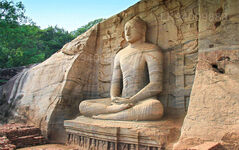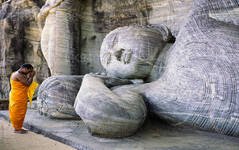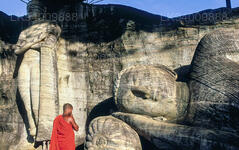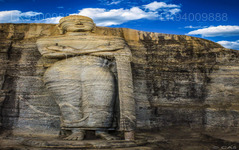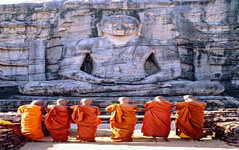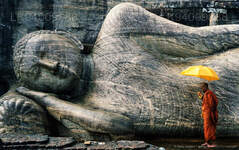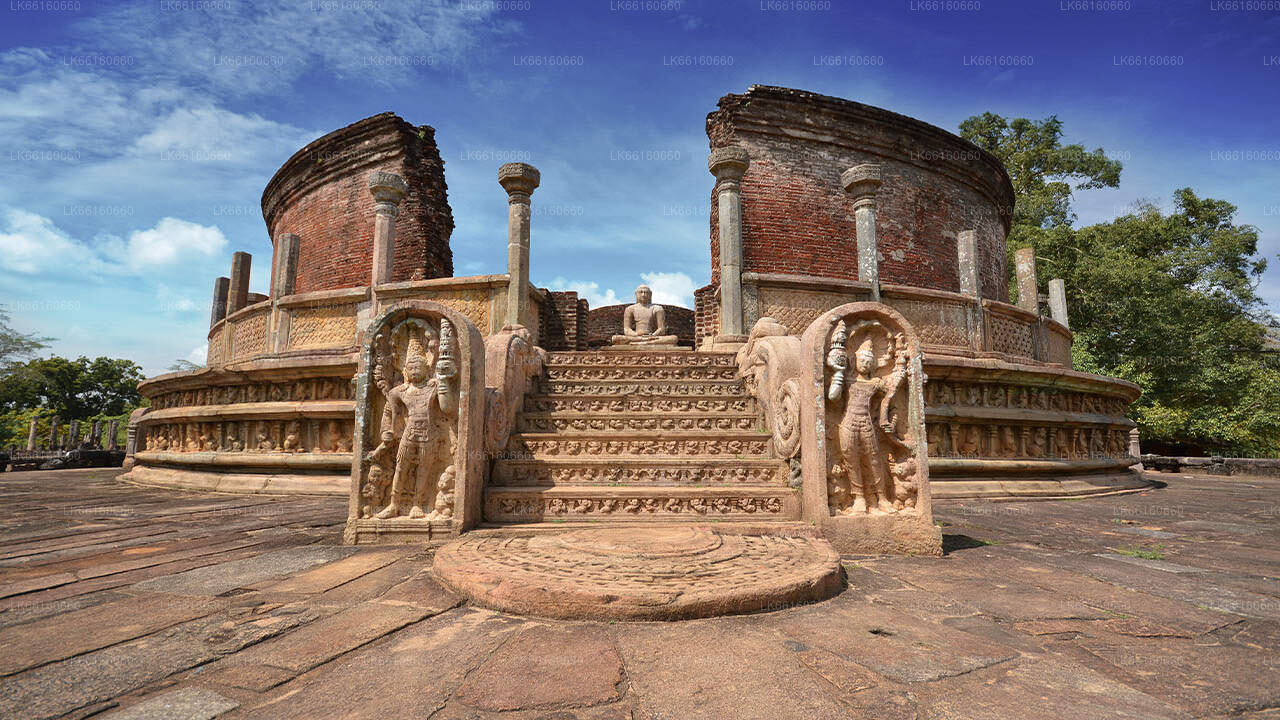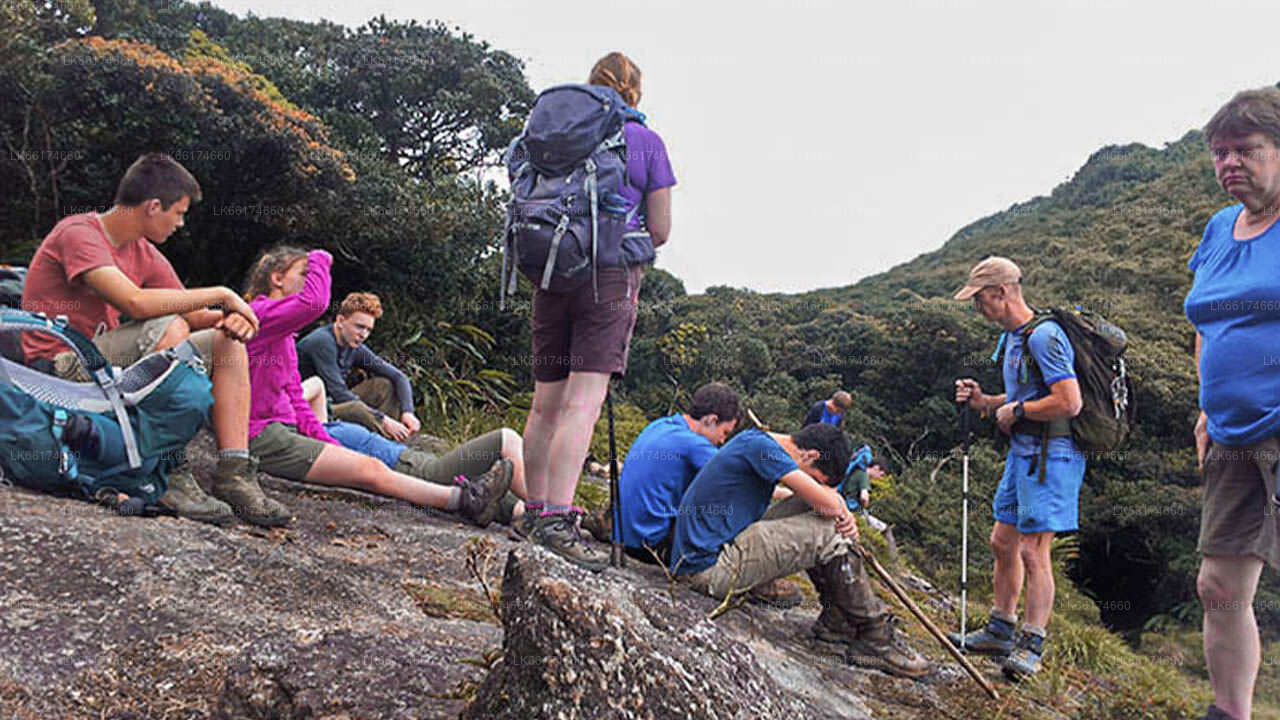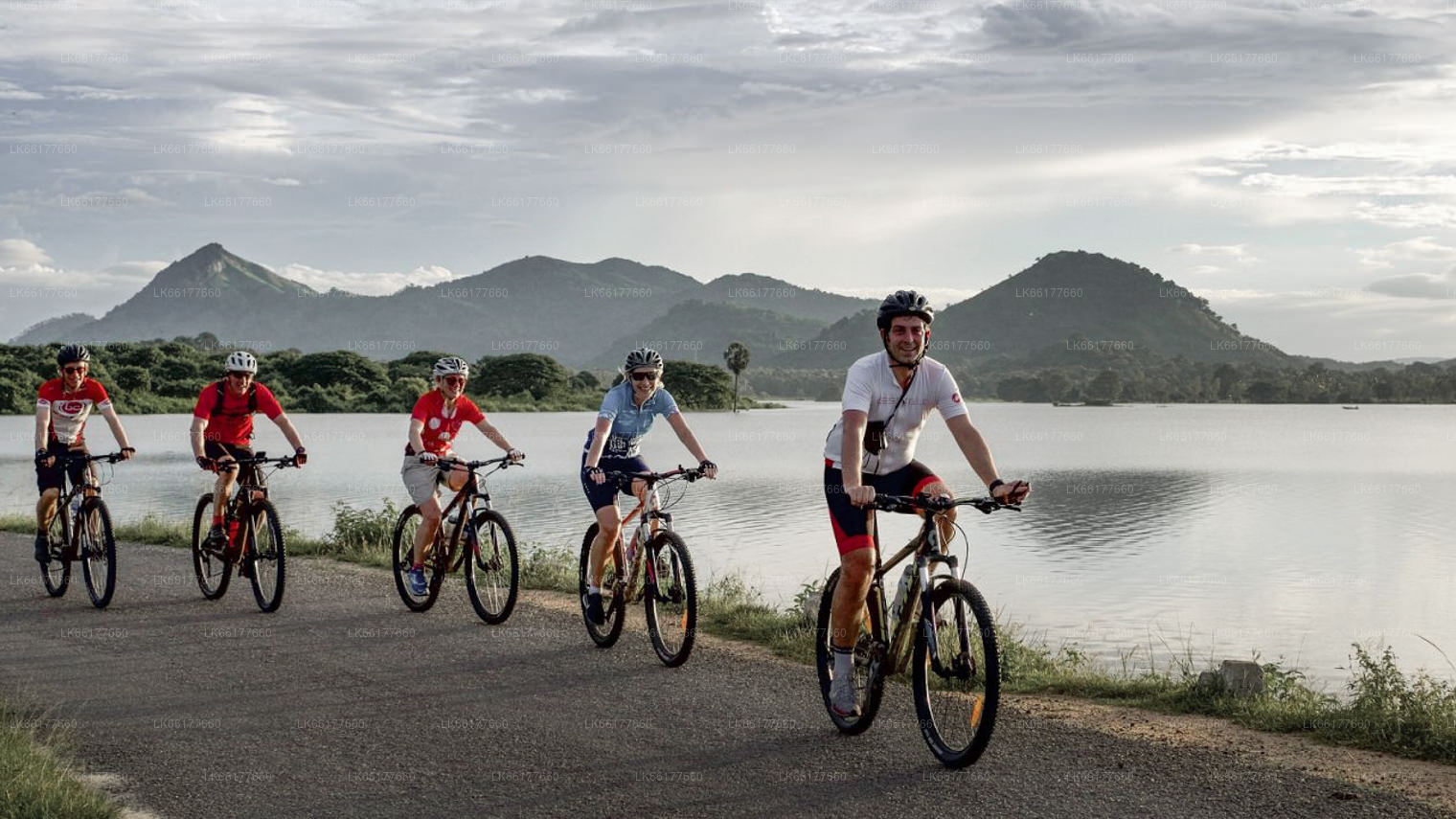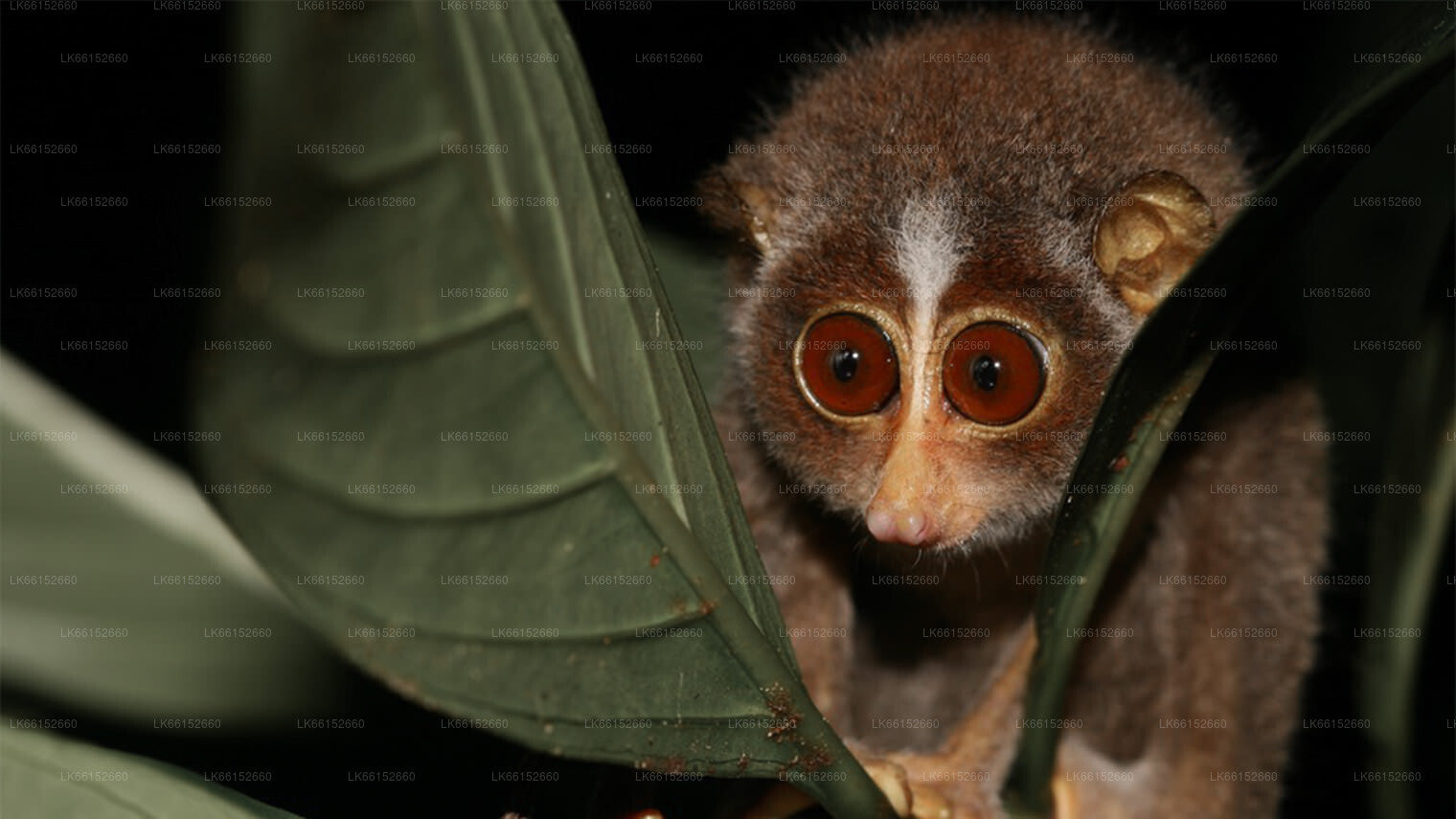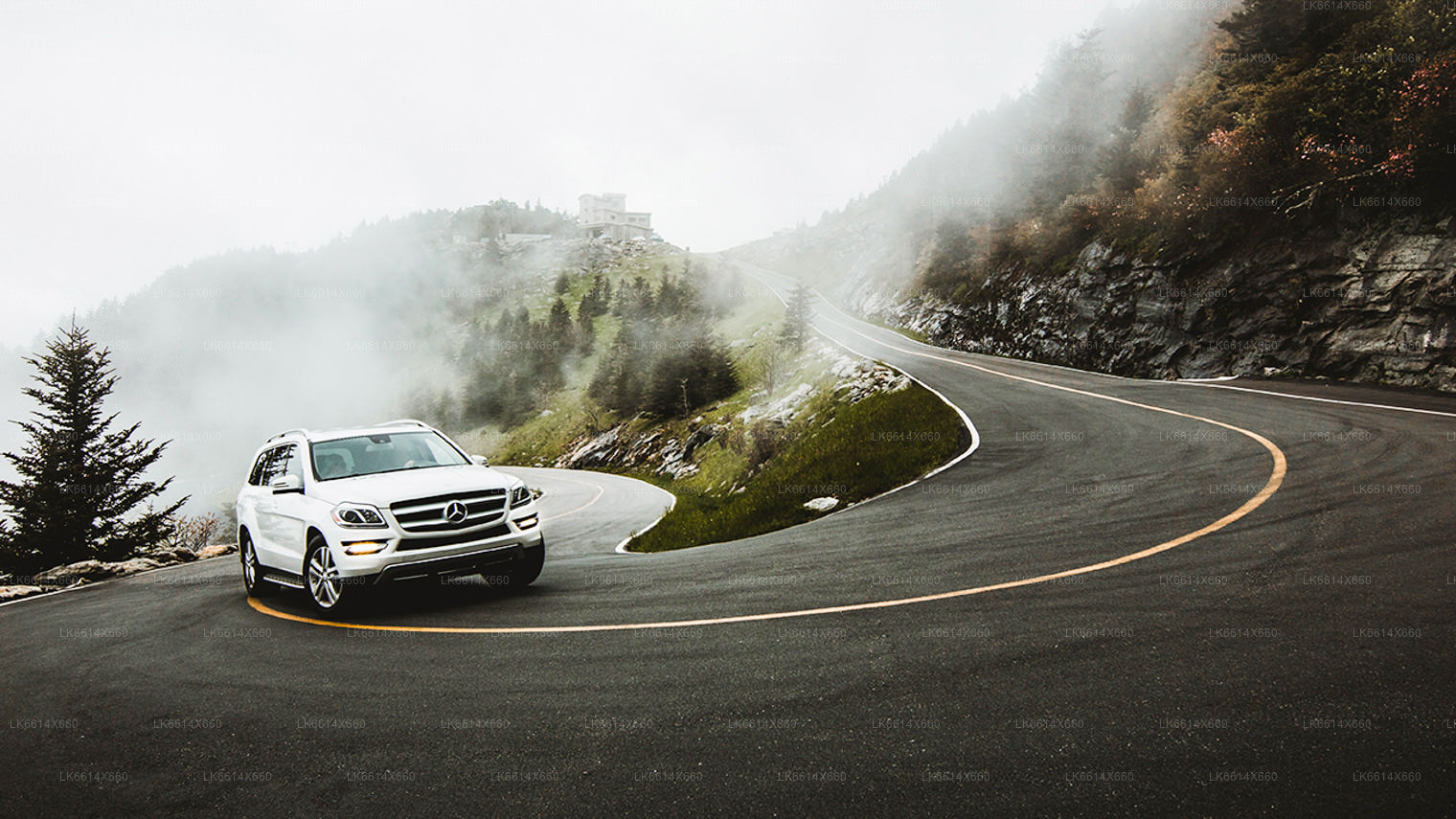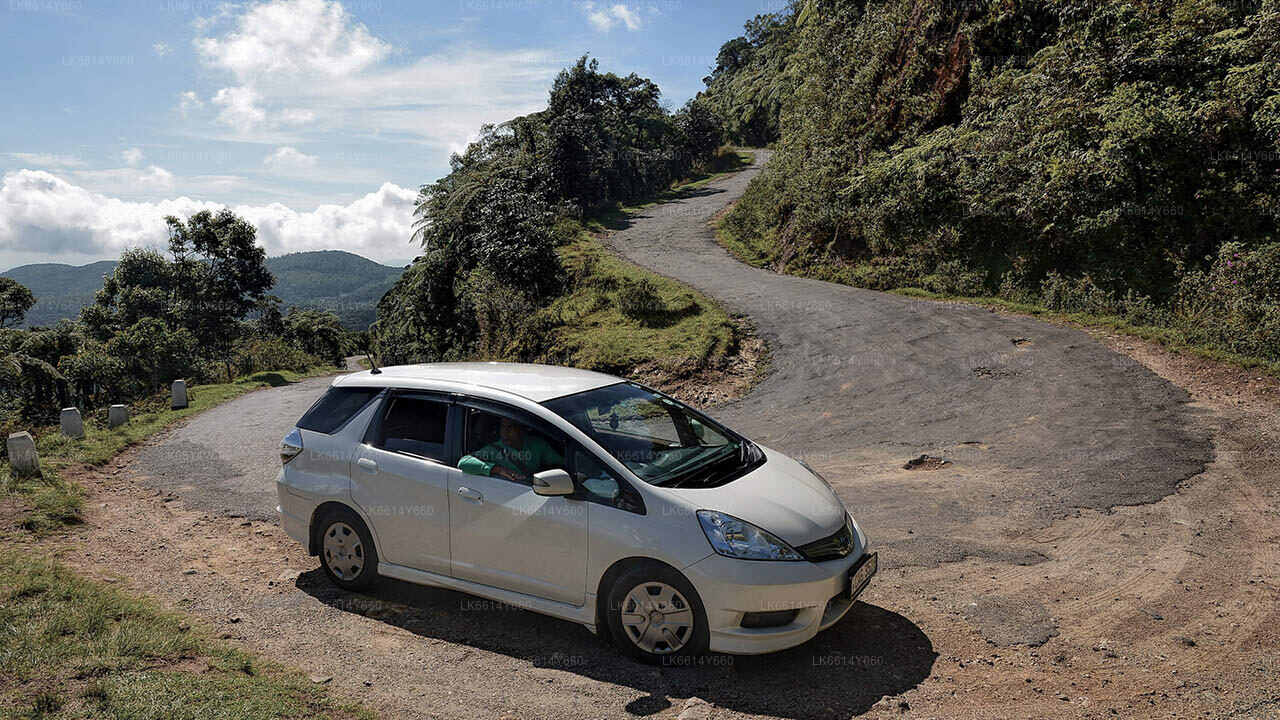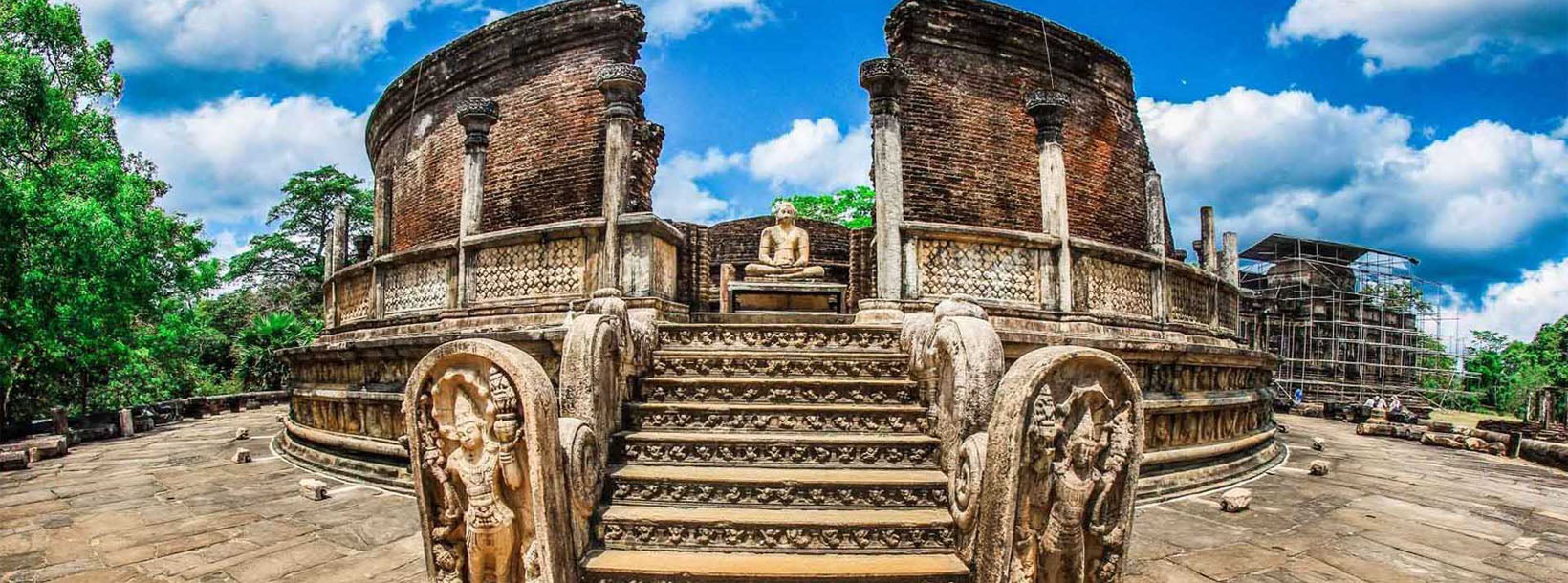
폴로나루와 시
스리랑카의 유네스코 세계문화유산인 폴로나루와는 스리랑카의 중세 수도(11세기~13세기)였습니다. 상징적인 갈 비하라(Gal Vihara) 석상을 비롯한 잘 보존된 유적지로 유명한 폴로나루와는 고대 싱할라 문명의 위엄을 보여주는 인상적인 건축물들을 자랑합니다.
Gal Vihara (ගල් විහාරය)
Gal Vihara (Sinhala: stone temple), Buddhist Temple at (UNESCO World Heritage Site) at Polonnaruwa, Sri Lanka is the most perfect specimen of Buddha statue hewn out of solid stone. Crafted during the reign of King Parakrabahu (1153-1186 A.C), Gal Vihara statues are still incomplete preservation with their irresistible charm and sublimity. It is undeniable that the sculptors of Gal Vihara were of greater skill and expertise in the art of stone sculpture in Sri Lanka. The images at Gal Vihara have brought about a higher level of awakening in the observers with respect to Buddhist art in Sri Lanka.
Gal Vihara at Polonnaruwa in Sri Lanka known as “The Northern Temple” at the beginning of its history, is a cave complex, about 27 meters in length and 10 meters in height at the center and sloping towards the ends, with sculptures carved on the solid rock in four shrines.
Gal Vihara, like numerous other Buddhist shrines of Sri Lanka, is a shrine of Theravada Buddhism. Then again Gal Vihara testifies to the influence of Mahayana Buddhism during the 12th century.
Caves of Gal Vihara
Gal Vihara consists of four cave shrines with sculptures hallowed out of granite rock.Caves from left to right are
(a) Cave of Vijjadharas,
(b) Excavated Cave,
(c) Cave of Standing Image and
(d) Cave of Reclining Image.
Between the Excavated Cave and the Cave of Standing Image is an inscription. In front of the Excavated Cave are remains of a pavilion.
Though the brick walls of the four shrines had collapsed centuries ago, the foundations remain giving evidence that each statue was separated from one another.
Cave of Vijjadharas
The cave consists of a main image of Buddha sculpted out of the rock boulder, having carved round and four small bas relief carvings of Buddha. The small bas relief statues are carved on either side, above the head of the main image.
The main image depicts the chief of meditative Buddhas titled Dharmadhatu, Adi Buddha, Vairocana, and Vajrasattva.
The four small images of the Buddha in Dhayani Mudra represent the four directions of the universe.
All five images are of Dhyana Mudra or meditative posture is believed to depict the all-embracing Body of Law (Dharmakaya).
The Excavated Cave
The Excavated cave too houses an image of Buddha in dhayana mudra or meditative attitude sculpted out of the rock boulder. The image herein is smaller than the main image at Vijjadhara Cave.
The Cave of Standing Image
The Buddha statue rising to 7 meters in height herein, stands on a lotus pedestal called Padmasana. Padmasana signifies that Buddha is a transcendental being.
The Cave of Standing image: Ananda or Buddha
The standing statue is at the head of the massive reclining Buddha. The standing statue’s placing of arms across the breast has caused a controversy as to the identity of the statue. The early archeologists believed the statue was that of Ananda, an attendant disciple of Buddha grieving at the passing away of Buddha.
However, the subsequent studies at Gal Vihara on the features of the statue have established that the standing image is that of Buddha and not of his disciple Ananda.
Firstly, since the standing image was once contained in its own shrine room, separated by brick walls it has no relevance to the reclining image. Though the brick walls of the three caves had collapsed several centuries ago, the foundations can still be seen.
Secondly, the right-ward curled clusters of hair are only found on the images of the Buddha and not on the images of his disciples in the same period.
Thirdly, the Buddhist artists never offered the Lotus throne or Padmasana to disciples Fourthly, the ears of the statue herein are elongated. Of all the statues of Buddha, his disciples, and deities, only the images of Buddhas consist of elongated ears.
The Cave of Reclining Image
The reclining image of Buddha at this cave is 14 meters long. In spite of the colossal proportions, the statue carries supreme grace and serenity.
The Cave of Reclining Image: Reclining posture Vs. Parinirvana posture
The argument over the massive statue with respect to Buddha’s posture of passing away and the posture of reclining was won over by the proponents who established that the great statue at this cave is a reclining image. Firstly herein the Buddha statue with a lotus symbol in the palms and feet is sculpted in the posture called Simhaseyya: the pose of a sleeping lion. The lion sleeps resting its head on its right paw.
Secondly, in Sri Lanka, the theme of passing away wasn’t taken as a popular feature in Buddhist art. Thirdly the images that regularly accompany the images of Buddha’s passing away, i.e.images of disciples, sal trees, and flowers aren’t present at this statue.
폴로나루와 지구 소개
폴로나루와는 스리랑카 북중부 주에서 두 번째로 큰 도시입니다. 고대 도시 폴로나루와는 유네스코 세계문화유산으로 지정되었습니다. 폴로나루와는 정복과 투쟁의 역사를 간직하고 있으며, 문화 삼각지대의 세 번째 요소로 손꼽힙니다. 캔디에서 북동쪽으로 약 140km 떨어진 폴로나루와는 역사와 문화 애호가들에게 수많은 중요한 명소를 품고 있어 끝없는 즐거움을 선사합니다.
오늘날 남아 있는 유적의 상당 부분은 파라크라마 바후 1세의 공로로 여겨집니다. 그는 공원, 건축물, 관개 시설 등 도시 계획에 왕실 자원을 대거 투자했습니다. 그의 통치 기간은 선견지명이 뛰어난 통치자 아래 왕국이 번영하고 번영했던 황금기로 여겨집니다. 파라크라마 사무드라는 거대한 탱크로, 후원자의 이름을 따서 명명되었습니다. 왕의 인기 있는 왕궁, 아름답게 조각된 석조 코끼리로 둘러싸인 알현실, 그리고 목욕탕은 당시의 뛰어난 공학 기술을 보여줍니다.
북중부 지방 소개
스리랑카에서 가장 큰 주(州)인 북중부주는 전체 국토 면적의 16%를 차지합니다. 북중부주는 폴로나루와와 아누라다푸레라는 두 개의 지구로 구성되어 있습니다. 아누라다푸라는 스리랑카에서 가장 큰 지구로, 면적은 7,128km²입니다.
북중부 지방은 투자자들이 사업을 시작할 수 있는 풍부한 잠재력을 가지고 있으며, 특히 농업, 농업 기반 산업, 축산 분야가 그렇습니다. 북중부 지방 주민의 65% 이상이 기초 농업 및 농업 기반 산업에 의존하고 있습니다. 3,000개가 넘는 중대형 탱크가 있어 북중부 지방은 "웨우 벤디 라제(Wew Bendi Rajje)"라고도 불립니다. 스리 마하 보디야(Sri Maha Bodiya), 루완웰리 세야(Ruwanweli Seya), 투파라마 다게바(Thuparama dageba), 아바야기리 사원(Abayagiri Monastry), 폴로나루와 란콧 웨헤라(Polonnaruwa Rankot wehera), 랑카틸라케(Lankathilake) 등이 있습니다.

